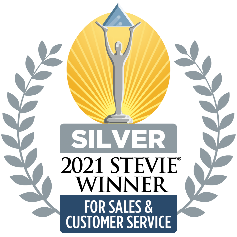Brian Stanz | Vice President, Global Support Services
Prior to COVID-19, a colleague of mine attended a conference where a large number of CIOs were discussing all aspects of IT. In one conversation, she asked the CIO what ERP his company was using, Oracle or SAP. Expecting to hear one of those two, the reply surprised her: “Neither. We’re running JD Edwards!”
Putting aside the fact that JD Edwards (JDE) is actually owned by Oracle, the CIO’s point was telling. Industry professionals around the world perceive JD Edwards as a “best-in-class” ERP, one that rivals SAP, Oracle Cloud, and other acquired Oracle ERP products.
In part, JDE’s outstanding reputation stems from its longevity as an ERP. Like most other ERPs, the product has grown and evolved since the initial distribution system on an IBM System34 in 1977. Today, there are two main products you associate with JD Edwards: JD Edwards World Software and JD Edwards EnterpriseOne.
The evolution of these products, however, is complicated by multiple acquisitions and rebrandings. As someone with more than 30 years of experience with JDE, I’m always glad to dispel confusion around the JDE product line. So here is my quick history of JDE.
First Came JD Edwards World
JD Edwards World, the original, RPG-based product, was published by the J.D. Edwards World Solution Company. It is still being run by hundreds of global customers today. It covers all aspects of ERP, including the following product areas:
- Distribution Management
- Quality Management
- Manufacturing Management
- Project Management
- Financial Management
- Foundation
- Human Resources Management
- Payroll and Expense Management
Then Came OneWorld
By the mid-1990s, the J.D. Edwards team decided to expand from the traditional IBM-based product and create a client-server-based product that could be run on multiple OS platforms and support multiple different databases. This offering was internally known at JDE as “Everest”. (There’s a blast from the past).
As the product was developed, JDE changed the name to OneWorld. There are also customers still happily running OneWorld today. For a period of time that JDE referred to as “Co-Existence,” both World and OneWorld shared the same data schema. Customers could run both products in a co-existence mode while they migrated to OneWorld.
In the early 2000’s, when PeopleSoft acquired JD Edwards, the new owners wanted to retain the OneWorld software and customers. However, they felt that the product brand needed to better align with their own ERP product, PeopleSoft Enterprise, so they blended the names Enterprise and OneWorld and came up with what you know today: EnterpriseOne.
EnterpriseOne Today
EnterpriseOne and OneWorld are not interchangeable in functionality, as the development of OneWorld stopped when the software was rebranded to EnterpriseOne. When Oracle acquired PeopleSoft in 2003, the evolutionary lines diverged, with greater focus given to EnterpriseOne, or E1. Co-existence was no longer an option, as the E1 data schema had changed from the original World version.
Today, E1 boasts a large, global customer fanbase. Oracle has continued to release versions, enhancements, and new functionality over nearly two decades. The software covers all aspects that World covered and much more:
- Asset Lifecycle Management CRM and Order Management
- Real Estate and Rentals Management
- Financial Management
- Human Capital Management
- Manufacturing and Supply Chain
- Procurement
- Project Management
- Warehouse and Transportation
- Apparel Management
- Grower Management
- Health and Safety
- OneView Reporting
Spinnaker Support Covers ALL JD Edwards Products
JDE Customers actively use all the different versions of World, OneWorld, and EnterpriseOne discussed above. They truly love the software, and so does our JD Edwards team at Spinnaker Support.
Our JDE team was the very first practice when Spinnaker Support was founded in 2008, and 40% of the original team remains at the company. These business and functional analysts, developers, and specialist contractors are among the most experienced in the industry. Team members average 24+ years with JDE software and the surrounding technical stack.

Many on our team were employees of the original J.D. Edwards company, and they have a very strong connection to the software and the overall JDE community. No matter which product or release your company runs, we can help.
This team has seen it all and fixed it all. Just last week, its service excellence was recognized for a Silver Stevie Award for Front-Line Customer Service Team of the Year. We’re very proud of the acknowledgment!
Reach out today to see how our support and managed services can assist your organization’s JD Edwards needs.